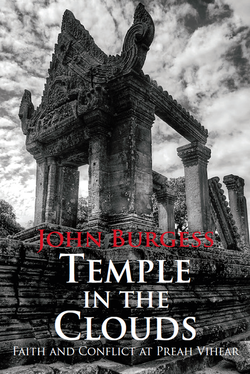John Burgess, former foreign correspondent for the Washington Post, has written a fascinating and compelling history of the temple known as Preah Vihear, which lies on the border of Cambodia and Thailand. Ownership of this important site has been disputed for generations. I went there with a group of students last spring, and I could see why. It is magnificent and noble. And no matter who you are, as you climb up the mountain through the stone gates to reach the very top, you can’t help but feel a sense of spirituality and other-worldliness. Burgess captures all of this, while weaving his way through the political machinations which have plagued its history and have soured the relationship between these two neighbouring countries. I really wish this book had been published before I took my trip there instead of just after. I would have understood so much more of what I was seeing. I guess now I’ll just have to make a return trip!
This is a history book which reads like a novel — but that doesn’t surprise me. Burgess is also an excellent novelist, and I wrote about his historical novel, A Woman of Angkor, here. Both books are so different, but equally beautiful and gripping, and it led me to ask him this question: does the effort of writing non-fiction like this book and historical fiction like A Woman of Angkor feel very different when you’re writing? In other words, does your brain go into a different place with fiction than it does with non-fiction, or is it all the same — writing is writing? His answer, like his books, is fascinating:
On one level, writing fiction and non-fiction are the same. You’re telling a story. You’re trying to engage people who know nothing about the subject and cause them to keep reading. To achieve that, you give them characters, but not too many. You give them facts, but you explain each one. You give them action and events. You give them suspense and surprise. You try to think of original ways to say things, special images or turns of phrases that haven’t been used before. You avoid long sentences. Forward you go. Every now and then you remind readers of something they read 50 pages earlier. If people are having to flip back through the pages to remind themselves who’s who, you’ve got trouble.
Where things go separate ways is in the material you work with. With non-fiction, you never know everything. You do your research, but at some point you have to stop and write, even though there’s always one more door you could knock on. So you have to tell the story despite the holes in what you know. But with fiction, you have the luxury of knowing everything. You know precisely what characters are doing, thinking, feeling. If in your mind you establish their personalities firmly, they do seem to take on lives of their own and lead you through their stories, but you still know everything about them. There are other differences, of course. I often write in the first person voice, meaning that I try for something closer to a conversational tone than I use in non-fiction. I want the reader to be engaged not in just what’s happened, but how the main character views it/reacts to it.
——————————————-
There is certainly a lot to be learned from this, and much to be gained from reading his books, whether you already have an interest in Cambodia or not. I’m very happy to be able to share them, and him, with you.

Recent Comments